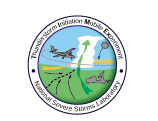

The QPF Challenge Associated with Precipitation East of the Rockies
A key to the mesoscale Quantitative Precipitation Forecast (QPF) problem is our lack of understanding of the definitive processes and mechanisms responsible for the wide range of observed modes and evolution of precipitating systems. At the National Severe Storms Laboratory (NSSL), we continue to study the entire life cycle of summertime precipitation, from convective initiation through the lifetime and demise of mesoscale convective systems. Such a large effort is necessarily composed of a wide range of linked efforts, including modeling, theoretical, and field studies, with synthesizing analyses. TIMEx will be a series of field programs and analyses designed to answer specific questions concerning convective initiation.The TIMEx Challenge
One of the fundamental issues in precipitation forecasting is the timing and location of the initiation of convection, or, in many cases, the failure of initiation. Clearly, any precipitation forecast will fail completely if initiation is forecast and fails to occur, and vice versa. Further, quantitative errors are strongly dependent on errors in the location and time of initiation. For example, recent work on seabreeze, terrain-induced convergence band, and dryline case studies shows the strong dependence of convection initiation upon:
- the trajectories that parcels follow while rising from the ground toward the level of free convection;
- the amount of mixing that occurs along these plumes of moisture; and
- the low-level temperature and humidity stratification.
In turn, the foregoing depend on the shear profile and variations in the vertical motion field associated with boundaries. None of these processes are adequately understood, and appear to be misrepresented in mesoscale models in the presence of weak larger-scale forcing.
The focus for TIMEx is ONLY convective initiation; other possible focii
are (or will be) addressed in related (or subsequent) efforts.
TIMEx Methodology
Following the example of VORTEX, testable hypotheses are being refined and debated among a group of Principal Investigators, whose membership is determined by said debate. Initial meetings and related discussion have prompted evolution in plans and approaches (see “History”), according to the observations required to test the hypotheses. Some hypotheses can be tested with existing systems, and detailed experiment plans, designed specifically to evaluate the hypotheses, can be developed and discussed at the discretion of the PIs. As these plans mature, they will become the basis for the development of proposals to appropriate funding agencies. Other hypotheses require the development of new or improved observing systems. The PIs who need these new systems are working directly and indirectly to support such development, and their plans and efforts will be posted here.Constraints - Funding
There is no over-arching funding available to support this observational and analysis effort. All activities will be contingent on the acquisition of sufficient resources. All PIs will be expected to provide/obtain their own support to participate, and are expected to contribute some level of resources toward related group efforts.